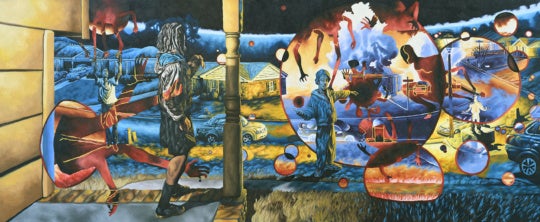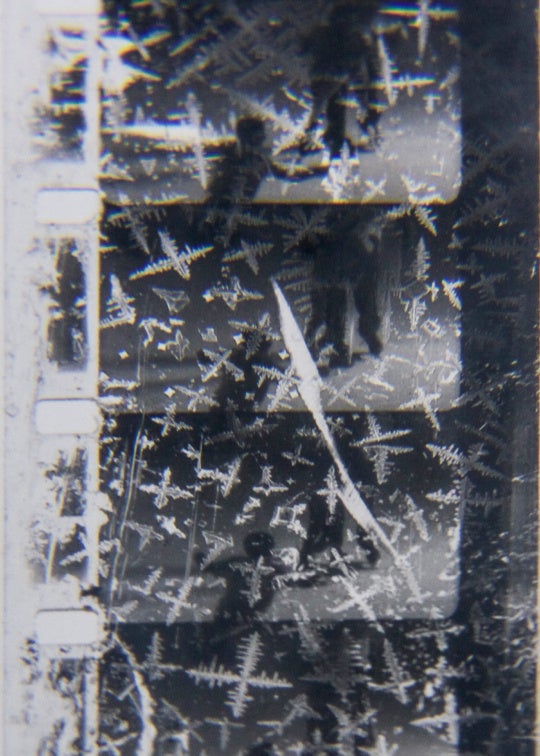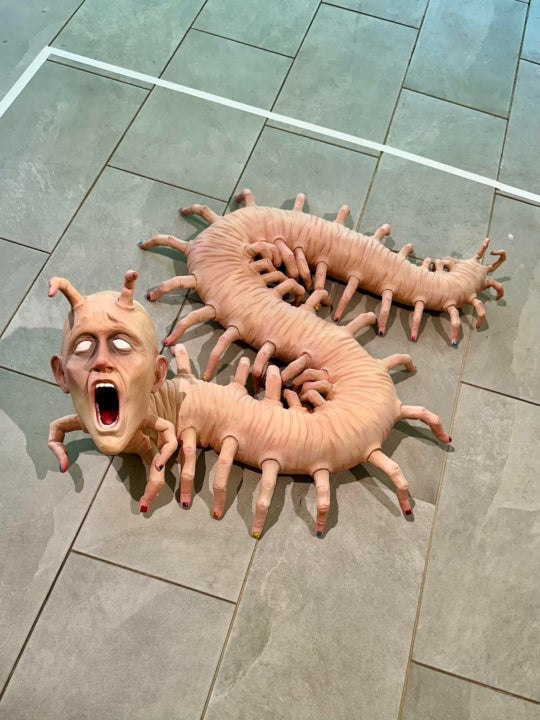
CANCER: Survivors in Focus, currently on view at the David J. Sencer CDC Museum, reminds us that most people have been affected by cancer [June 10-September 17, 2013]. In a poignant yet candid exhibition, three photographers—John Kaplan, Carolyn Taylor, and Bryan Meltz—tell stories of cancer from around the world. Cancer takes a toll on the physical and psychological state of the affected, and all three artists document the lives of people that are forced to face this mortal reality. Each survivor photographed has a face and a name, reminding the viewer that cancer is not just a statistic but a pervasive and potentially fatal illness. The exhibition, a collaboration between the Sencer CDC Museum and the CDC’s Division of Cancer Prevention and Control, serves partly as an educational presentation on the global presence of cancer and the hardships that it necessitates; however, Survivors in Focus is much more than a fact teaching tool. It has an emotional resonance that rings true to millions of people, heightened by the varying perspectives that each photographer presents. To cancer patients and survivors, the exhibition is a source of hope and support; to everyone else, it is a moving portrayal of something that likely has or will touch them at some point in their lives.
John Kaplan’s series Not As I Pictured (2008-2009) depicts the Pulitzer Prize-winning photographer’s battle with Non-Hodgkin’s lymphoma, from diagnosis to recovery. Kaplan photographed himself and his family during some of the most difficult times after his diagnosis: He cries when a barber shaves his head; he exhales as the doctor inserts a needle in his chest for the first time; and he sits nauseous by his toilet after treatment. By offering a glimpse into his individual struggle with cancer, Kaplan tells the story of many. His simple yet striking photographs effectively portray the effect cancer creates in the body and mind and its influence on family.
Upon viewing The Joy of Every Day (2008-2009)—a photograph of Kaplan laughing while his daughter plays with bubbles—one would not recognize it as the picture of a family struggling with illness. The Joy of Every Day stands out as a photo that highlights an equivocality many cancer patients inevitably face: How do they lead a normal life without ignoring the possibility of death? Kaplan’s linear narrative is moving in its intimacy. With every picture, the viewer learns something else about how the photographer, his wife, and his daughter cope with the cancer. It’s a straightforward but powerful approach to the subject, so that by the time we see the image of the photographer and his wife toasting to his remission, there’s a sense of relief and confidence in human strength.

In Without Borders: The Global Face of Cancer (2010-2011), ovarian and endometrial cancer survivor Carolyn Taylor documents her travels to fourteen countries. She began her trek in 2010 to interview and photograph cancer patients, cancer survivors, caregivers, and medical professionals to prove that cancer doesn’t discriminate. After experiencing the subpar to non-existent cancer treatment services around the world, The New York-based photographer returned home with a reinvigorated mission. In 2011, Taylor founded Global Focus on Cancer, a nonprofit organization that provides support for people affected by cancer around the world.
Although the 50 portraits included draw on the ability to evoke emotion due to human expression, rich tones, and vibrant color, they lack impact because of repetitive composition. The recurrence of these headshots creates consistency, but the images do not always induce an emotional reaction. The video that supplements the exhibit makes up for this absence by telling the stories of people like Harmala Gupta, Hodgkin’s lymphoma survivor and founder of the first cancer support group in India.
Whereas Kaplan’s personal body of work implies a universal struggle, Taylor’s Without Borders demonstrates it; there is proof that Tanzania’s only facility for chemotherapy is overcrowded and that millions are dying of cancer due to inadequate education and resources. The portraits could have stood on their own as interesting pictures of persons from around the world, but the documentary photographs and written explanations in the video give the portraits voices. The carefully composed yet unbalanced composition of the exhibition itself mirrors the erratic and dominating nature of cancer. In the video, Taylor says that she “completely broke the rules” by becoming close to the people she photographed. Such an apparent connection with her subjects and their willingness to share their stories allowed me to break the rules and see them as emotional beings and not just faces on a wall.

The exhibition’s didactic material states that 12 million Americans out of the 300 million living today were at some point in their lives told they have cancer. If that number doesn’t demonstrate how imposing of a force cancer is, Bryan Meltz’s Close to Home: CDC’s Stories of Survivorship (2013) confirms that cancer can even affect those leading the fight against it. Atlanta-based documentary photographer Bryan Meltz, unlike the other artists in the exhibition, has never been diagnosed with cancer and admits she was initially terrified of the word. This viewpoint allows Meltz to present objective photographs lacking in sentimentality or romanticism, despite the nostalgic black and white presentation. The twelve CDC employees and survivors photographed by Meltz express a range of emotions—happy, solemn, serious—but they are all genuine. Liz, a survivor of Hodgkin’s lymphoma, smiles and looks off camera as if something out of sight caught her off guard. Louisa, survivor of Stage IIIc ovarian cancer, leans over in a rocking chair to pet her dog. Meltz has portrayed them in moments that are profound because they are normal, much like Kaplan’s The Joy of Every Day.
Meltz’s captions are integral; each survivor’s statement reveals a part of his or her personality that shows how different people process their experience with cancer. Jim, a prostate cancer survivor, says on his survivor status: “I wouldn’t say I was cured of cancer. I’d say that I might be cured”—a realistic yet hopeful approach to life after living with a pervasive and unpredictable disease.
A thread that connects the three bodies of work is the importance of family and community support. By sharing these stories, the photographers have given us an insightful peek into an illness that’s too devastating to be summed up in a series of numbers, percent signs, or even images.
House rules for commenting:
1. Please use a full first name. We do not support hiding behind anonymity.
2. All comments on BURNAWAY are moderated. Please be patient—we’ll do our best to keep up, but sometimes it may take us a bit to get to all of them.
3. BURNAWAY reserves the right to refuse or reject comments.
4. We support critically engaged arguments (both positive and negative), but please don’t be a jerk, ok? Comments should never be personally offensive in nature.




